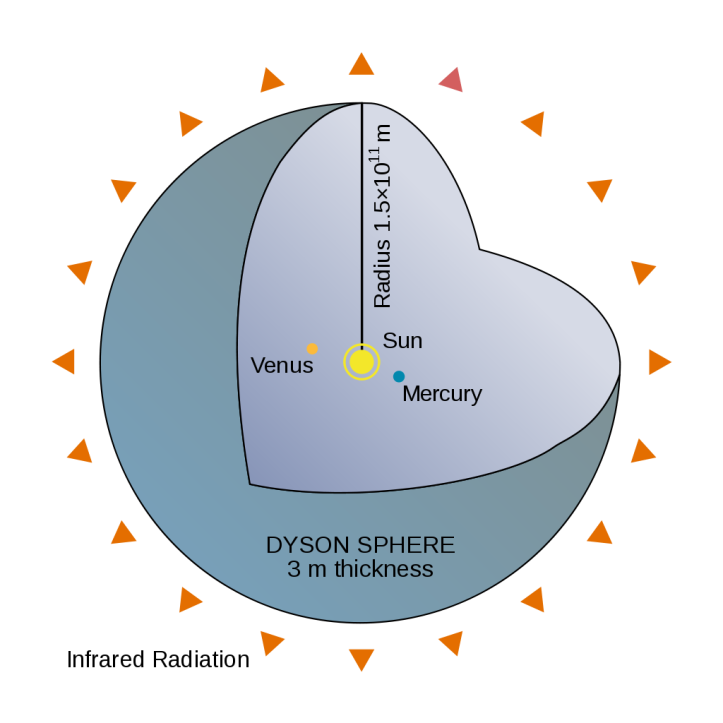 “In harmony with the Tao,
“In harmony with the Tao,
the sky is clear and spacious,
the earth is solid and full,
all creatures flourish together,
content with the way they are,
endlessly repeating themselves,
endlessly renewed.
When man interferes with the Tao
the sky becomes filthy,
the earth becomes depleted,
the equilibrium crumbles,
creatures become extinct.
The Master views the parts with compassion,
because he understands the whole.
His constant practice is humility.
He doesn’t glitter like a jewel
but lets himself be shaped by the Tao,
as rugged and common as stone.
― Lao Tzu, Tao Te Ching(1)
In 2000, Nobel Prize-winning chemist Paul Crutzen suggested that humanity’s impact on the world was so substantial that Earth may have entered a new human-dominated geological epoch, the Anthropocene(2)—“the recent age of man”.
The Earth’s history shows that the planet can indeed tip from one state to another, amplifying the sometimes minor changes which trigger the transition. The relatively stable environment of the Holocene—the era that began at the end of the last Ice Age around 11,700 years ago—saw unprecedented human expansion, allowing agriculture and the emerging of towns, cities, and complex societies.
Since the 1950s the influence of human activity on the Earth system has increased markedly. This ‘Great Acceleration’ is marked by a major expansion in human population, and large changes in natural processes. Four of nine planetary boundaries have now been crossed as a result of human activity: climate change, loss of biosphere integrity, land-system change, and altered biogeochemical cycles (phosphorus and nitrogen). Two of them, climate change and biosphere integrity, are what scientists call “core boundaries”.
Significantly altering either of these “core boundaries” would drive the Earth System into a new state. The risk we face is a flip to some permanently altered state further from how things are today: a hotter world with much less productive oceans, for example. The problem is that today’s science does not allow us to forecast what this new state would like.
Therefore, the goal of staying at or returning close to Holocene conditions seems judicious. But is it realistic? The Holocene never supported a civilisation of 10 billion reasonably rich people. A “good Anthropocene” might do the trick. It should be a new state in which some aspects of the Earth system’s behaviour are lastingly changed, creating a stable and productive environment for humans and other species. Can we engineer anything like that?
Geoengineering is the deliberate large-scale intervention in the Earth’s natural systems to counteract climate change. Increasingly, geoengineering strategies are being openly discussed in scientific and policy circles as a potential option for dealing with a runaway rise in global temperatures. Would world leaders ever decide to try geoengineering on a planetary scale? Some experts think that the ethical, moral, and political complications posed by the idea are insurmountable.
Interestingly, when scientists think big about our final destiny within the universe, not only geoengineering but intervention at galactic scale appears as the only option.
In 1960, Freeman Dyson postulated that a growing technological culture would ultimately be limited by access to energy, and that advanced, energy-hungry civilizations would be driven to harvest all the available light from their stars.
In 1964, the Russian astronomer Nikolai Kardashev defined three levels of civilizations (Kardashev scale), based on the order of magnitude of power available to them:
- Type I: Technological level close to the level presently attained on earth, with energy consumption equivalent to the solar insolation on Earth, between 1016 and 1017 watts.
- Type II: A civilization capable of harnessing the energy radiated by its own star, with energy consumption equivalent to the entire radiation output of its star (4×1026 watts for the Sun)
- Type III: A civilization in possession of energy on the scale of its own galaxy, with energy consumption comparable to the luminosity of the entire Milky Way galaxy, about 4×1037 watts.
In order to reach type 2, we should be able to build a Dyson sphere, a hypothetical megastructure which completely encompasses a star, allowing to capture most or all of its power output.
 In 1973 Carl Sagan calculated that to sustain our present trend in energy use, which for the past few centuries has increased by about 3% per year, humanity would need to build a Dyson sphere within about a millennium, becoming a type 2 civilization, and would need to encase most of the Milky Way’s stars in Dyson spheres a millennium after that, becoming a type 3. We’d better hurry up!
In 1973 Carl Sagan calculated that to sustain our present trend in energy use, which for the past few centuries has increased by about 3% per year, humanity would need to build a Dyson sphere within about a millennium, becoming a type 2 civilization, and would need to encase most of the Milky Way’s stars in Dyson spheres a millennium after that, becoming a type 3. We’d better hurry up!
What is shocking is that, so far, we have failed to find even the faintest trace of extra-terrestrial life. Given the level of energy consumption advanced civilizations would require and the relatively short time scales involved to develop, we should have found some evidence by now. A star’s light would fade as it is encased in a “Dyson sphere,” but those constructions could be detected by the mid-infrared glow of their radiated waste heat. Such waste radiation should be visible to us, but it is not the case(3). So maybe there is another “way”.
In 2011 the science fiction author Karl Schroeder came up with another plausible reason for the apparent absence of aliens. Paraphrasing Arthur C. Clarke, he suggested that any sufficiently advanced technology would be indistinguishable from nature.
Basically, either advanced alien civilizations don’t exist, or we can’t see them because they are indistinguishable from natural systems.
This sounds surprisingly similar to Taoism. In Taoism and other Chinese traditions, the object of spiritual practice is to become one with the tao (“way”, “path” or “principle”) or to harmonise with Nature in order to achieve ‘effortless action’ (Wu wei).
In the Tao te Ching, Lao Tzu explains that beings (or phenomena) that are wholly in harmony with the Tao behave in a completely natural, uncontrived way. The goal of spiritual practice for the human being is, according to Lao Tzu, the attainment of this purely natural way of behaving, as when the planets revolve around the sun. The planets effortlessly do this revolving without any sort of control, force, or attempt to revolve themselves, instead engaging in effortless and spontaneous movement. (Wikipedia, Wu Wei)
Very interestingly, Taoism is not a fancy new thing. Quite the contrary!
My teachings are older than the world.
How can you grasp their meaning? (Tao Te Ching)
Can you grasp the meaning?
____________________
(1) English traslation by Stephen Mitchell
(2) A proposal to formalise the ‘Anthropocene’ is being developed by the ‘Anthropocene’ Working Group for consideration by the International Commission on Stratigraphy, with a current target date of 2016. See: Lewis, Simon L., and Mark A. Maslin. “Defining the Anthropocene.” Nature 519, no. 7542 (March 12, 2015): 171–80. doi:10.1038/nature14258.
(3) Griffith, Roger L., Jason T. Wright, Jessica Maldonado, Matthew S. Povich, Steinn Sigurdsson, and Brendan Mullan. “The Ĝ Infrared Search for Extraterrestrial Civilizations with Large Energy Supplies. III. The Reddest Extended Sources in WISE.”arXiv:1504.03418 [astro-Ph], April 14, 2015. http://arxiv.org/abs/1504.03418.
Featured Image: (Red) Ensō
[…] The term “Singularity” was popularized by Vernor Vinge(2). He thought it would bring a wave of change comparable to the rise of human life on Earth. In fact, superintelligence would be the last invention humans would make, as Irving Good had suggested(3) previously in 1965. After the singularity, growth would accelerate sharply as an ever-accelerating pace of improvements would cascade through the economy, leading to a rapid development of a Kardashev Type I civilization. […]
[…] I have already discussed this idea as a potential explanation to Fermi’s Paradox. It lends substance to the idea of an “engineered” universe, which is akin to the idea that we might be living inside a computer simulation, which is not too far from the idea that someone (God?) created the universe. […]
[…] alien civilizations would inevitably come up with a way to harness the power of suns by using a Dyson sphere. The sphere could be an enormous solar power collection system, perhaps even encircling an entire […]
[…] summarise: the difference between a plague and a successful galactic civilisation may —or may not— lie in gaining global consciousness. Just in case, repeat after me: We are a […]
[…] alien civilizations would inevitably come up with a way to harness the power of suns by using a Dyson sphere. The sphere could be an enormous solar power collection system, perhaps even encircling an entire […]